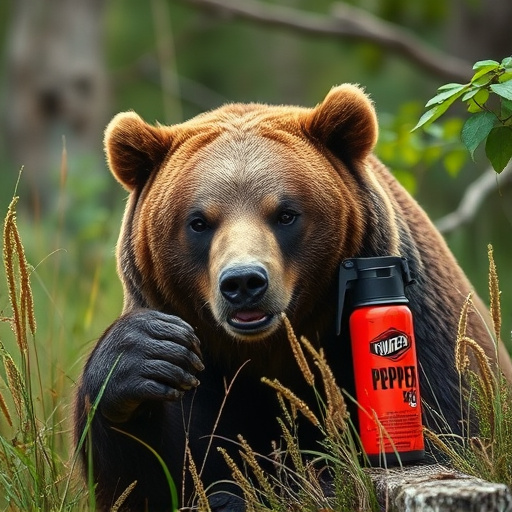The effectiveness of bear repellent spray is tied to its capsaicin concentration (10% – 25%), which irritates bears. Choose products with at least 1.5% capsaicin for adequate protection. Follow manufacturer instructions for application, maintaining distance from bears, and safety precautions to minimize irritation.
“In regions where black bears roam, knowing how to defend yourself is vital. This guide explores the effectiveness of bear spray as a crucial tool for safety in encounters with these powerful creatures. We delve into the science behind capsicum, the active ingredient in many repellents, and its capsaicin concentration. Learn how the right bear spray, used correctly, can provide essential protection when faced with these wild animals. Discover expert tips on application techniques and safety precautions to ensure your peace of mind in bear country.”
- Understanding Capsaicin: The Active Ingredient
- Choosing the Right Bear Spray for Protection
- Application Techniques and Safety Precautions
Understanding Capsaicin: The Active Ingredient
Capsaicin, the active ingredient in bear repellent spray, is a natural compound derived from chili peppers. It’s this component that gives the spray its pungent odor and burning sensation. When used in bear deterrents, capsaicin creates an unpleasant experience for the bear, often causing them to retreat. The effectiveness of the spray lies in its concentration—higher concentrations of capsaicin ensure a stronger reaction from the bears.
The capsaicin concentration in bear repellent spray varies, but typically ranges from 10% to 25%. This concentration is crucial in ensuring the spray serves as a reliable deterrent. A higher percentage means more capsaicin molecules interacting with the bear’s sensory receptors, leading to a faster and more intense reaction.
Choosing the Right Bear Spray for Protection
When selecting bear spray, one of the crucial factors to consider is the capsaicin concentration. This active ingredient is responsible for the spray’s effectiveness in deterring bears. A higher capsaicin level generally means stronger protection, but it’s not the only aspect to evaluate. Look for products with a concentration of at least 1.5% capsaicin for adequate bear repellent properties.
Additionally, consider factors like the spray pattern and reach, as these will impact your ability to effectively deploy the spray in an encounter. Choose a brand that offers a wide spray angle and ensures the nozzle reaches distant targets, enabling you to protect yourself from a safer distance. Always read product labels and follow safety guidelines for optimal results when defending against black bears with bear spray.
Application Techniques and Safety Precautions
Proper application techniques are key to ensuring the effectiveness of bear repellent spray. First, always read and follow the manufacturer’s instructions for usage. Typically, this involves spraying directly into the bear’s face from a safe distance, aiming for the eyes, nose, and mouth. The capsaicin concentration in bear repellents varies, but concentrations between 10% and 25% are commonly recommended for optimal performance.
Safety precautions are paramount when using bear repellent spray. Keep a safe distance from bears at all times, as close encounters can lead to mistaking the spray for aggression. Store repellents out of reach of children and pets, and avoid spraying in windy conditions, as this can blow the repellent back onto the user. Additionally, be aware that capsaicin can cause skin irritation, so wash thoroughly after each use and consider wearing protective gloves.
When it comes to defending against black bears, bear spray equipped with a high capsacin concentration (the active ingredient derived from chili peppers) is an effective and preferred choice. By understanding the power of capsaicin and selecting the right bear spray, you can ensure your safety while enjoying the outdoors. Proper application techniques and following safety precautions are crucial to making sure this potent deterrent does its job effectively. Remember, knowledge and preparation are key when navigating the wilderness.
